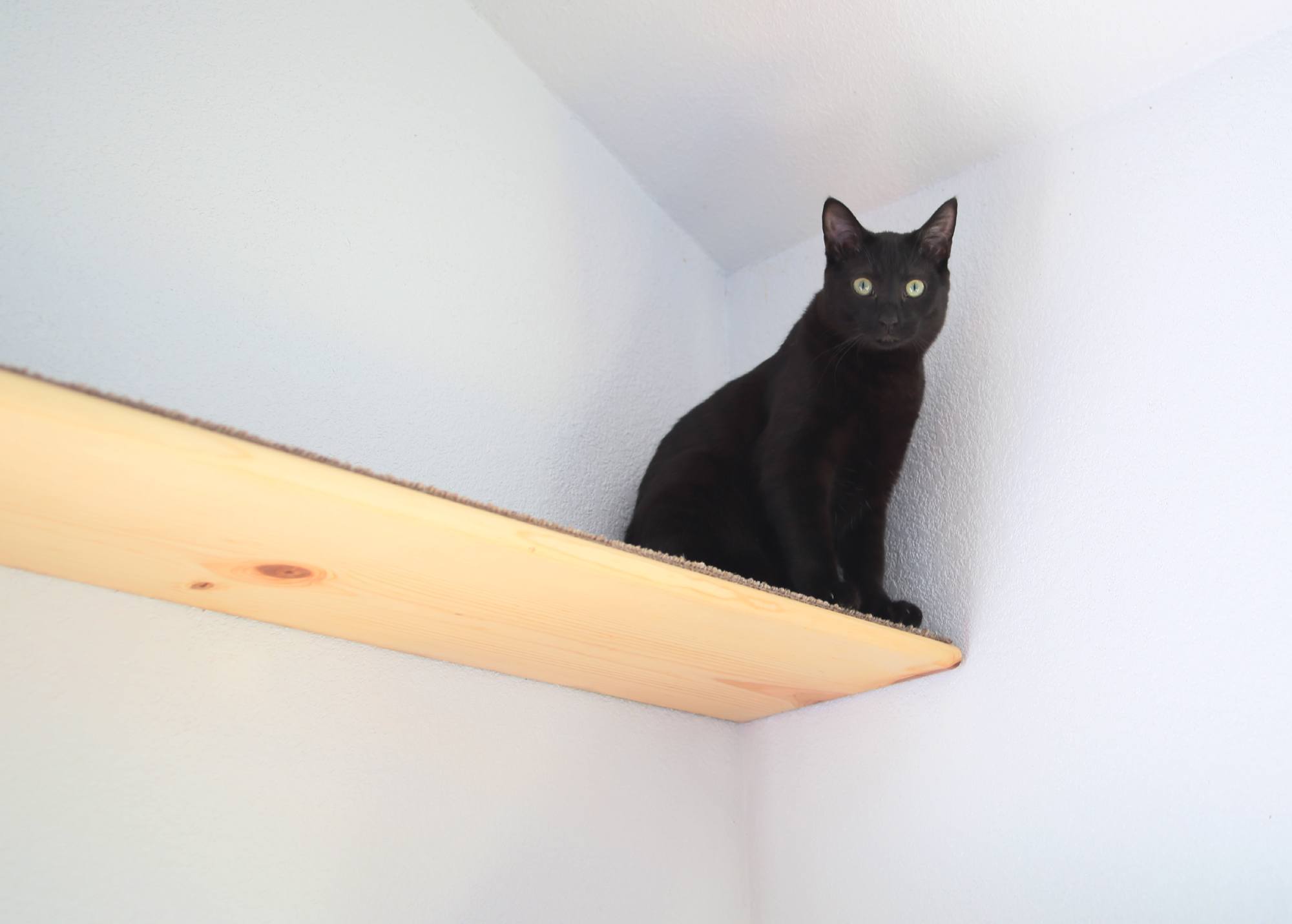My cats love to climb, so I decided to build some elevated shelves for them in our living room. Since a cat weighs much less than a stack of books, there was no need for a heavy-duty installation, so I devised a simple, elegant “floating shelf.” It’s also appropriate for ornaments and framed photos, if for some reason you don’t have cats.
Figure A shows the concept. Steel rods are partially embedded in the wooden studs in the wall. Holes are drilled in the back edge of the shelves, and the rods fit into the holes. No supporting brackets are needed.
















